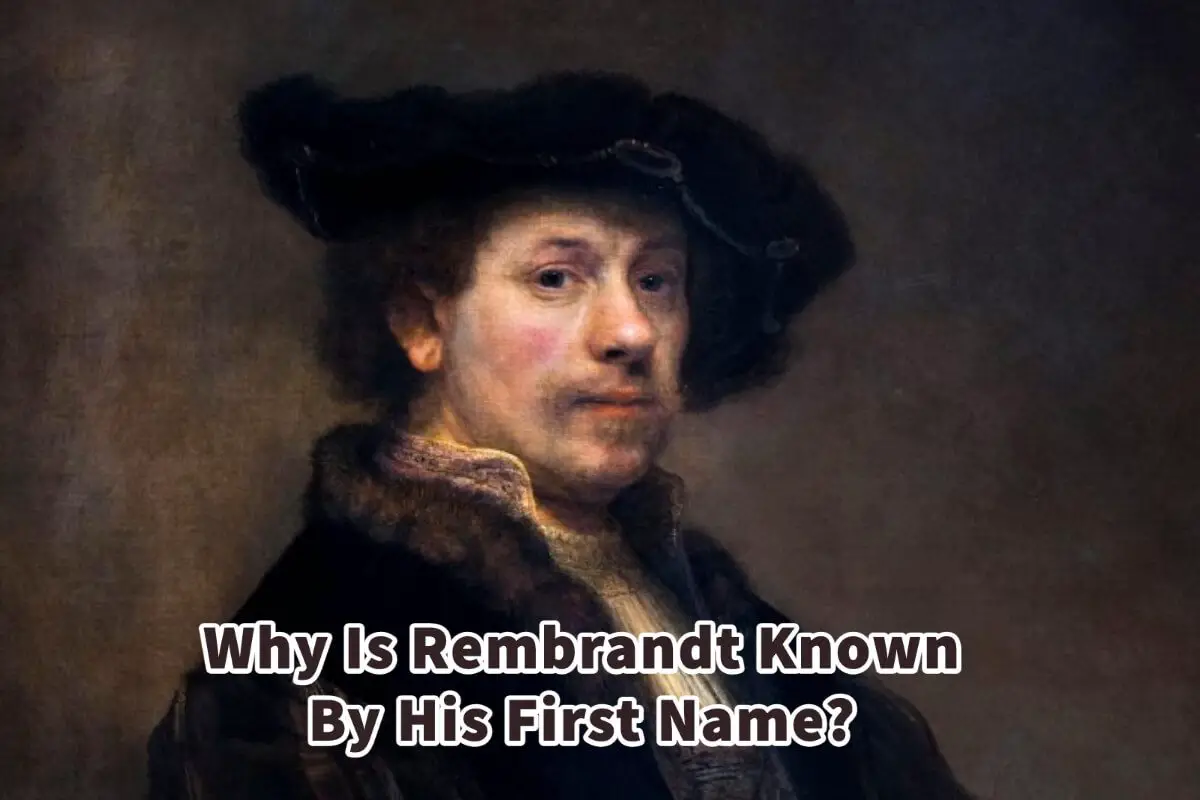Like many other great artists, such as Michelangelo, Titian, and Raphael, Rembrandt is known by only his first name.
We are not sure why Rembrandt is known by only his first name, but from 1633 until he died in 1669, he signed his art as “Rembrandt.” Before this, he had several other ways that he signed his art. Rembrandt is not a very common Dutch name and is a name that was changed from Rembrandt to Rembrandt.
Table of Contents
- About The Name Rembrandt
- Ways Rembrandt Signed His Name
- The Artistic Legacy of Rembrandt: 10 Reasons for His Enduring Importance
- Frequently Asked Questions
- Frequently Asked Questions
- Related Questions
About The Name Rembrandt
Rembrandt is not a very common first name; similar Dutch names would be Remmert or Gerbrand. Rembrandt is not and never has been a common Dutch first name, but it is now a well-known name thanks to Rembrandt and his fame as an artist.
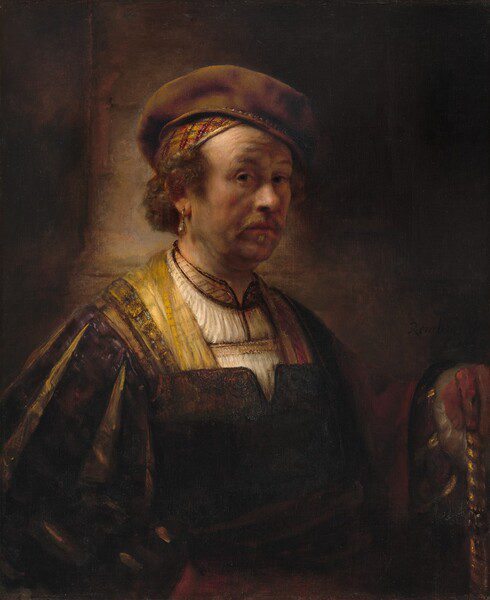
Rembrandt’s actual first name was Rembrant. His full legal name is Rembrant Harmenszoon van Rijin. The name would be defined as follows:
- Rembrandt or Rembrant is his first name; this is not a very common Dutch first name.
- Harmenszoon – The name Harmenszoon means “son of Harmen.”
- van Rijin – The name van Rijin means the family lived by the Rhine.
The name Rembrandt is an Ancient German name coming from the name Ragemprand. The name has two elements and meanings, Ragem, which means to advise or decide, plus the name” brant,” which means sword.
Throughout his artistic career, Rembrandt would sign his paintings and artwork in various ways.
Why Rembrandt Only Used One Name
Rembrandt started to sign his name as Rembrandt from 1633 onward until his death. From a very early time, he used only his first name on his works of art.
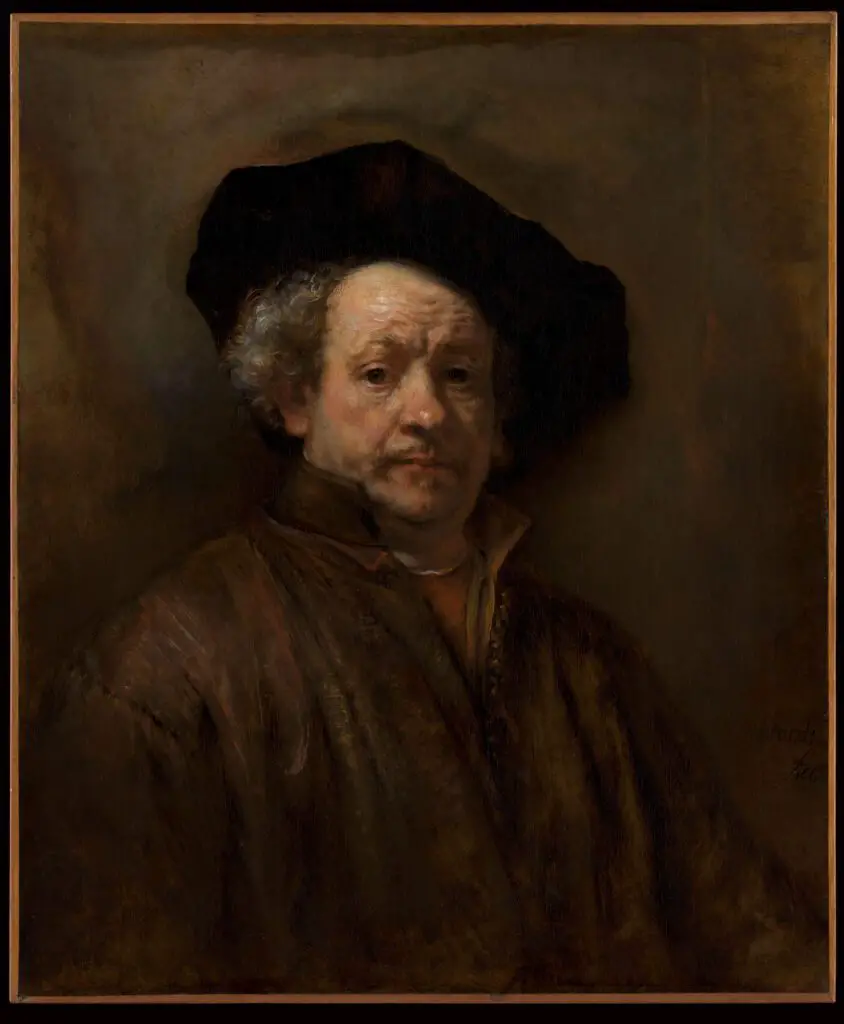
In 1633, he also changed his name from Rembrant to Rembrandt with a silent “d.” We are not sure why he signed his name as only one name but here are some possible reasons,
- Many artists signed their art with just one name before Rembrandt did. Here are some other artists who also used only their first name:
- Michelangelo (1475 – 1574) – Full name is Michelangelo di Lodovico Buonarroti Simoni
- Titian (1488- 1576 ) -Full name is Tiziano Vecellio.
- Raphael (1483 – 1520) – Full name is Raffaello Sanzio da Urbino.
- It could be he felt his name was just too long. Rembrandt Harmenszoon van Rijn is a long name for any artist.
- It was the best name to use of all his names. Neither Harmenszoon nor van Rijin would have made as much sense as Rembrandt.
- Some historians have felt he signed his name as just one name like other great artists such as Michelangelo, Titian, and Raphael, as he wanted to show that he was equal to these other great artists.
We have no definitive answer as to why he chose to sign his name as Rembrandt. Before 1633 we know that he used many different ways to sign his art before this time but eventually settled on just Rembrandt for all his paintings.
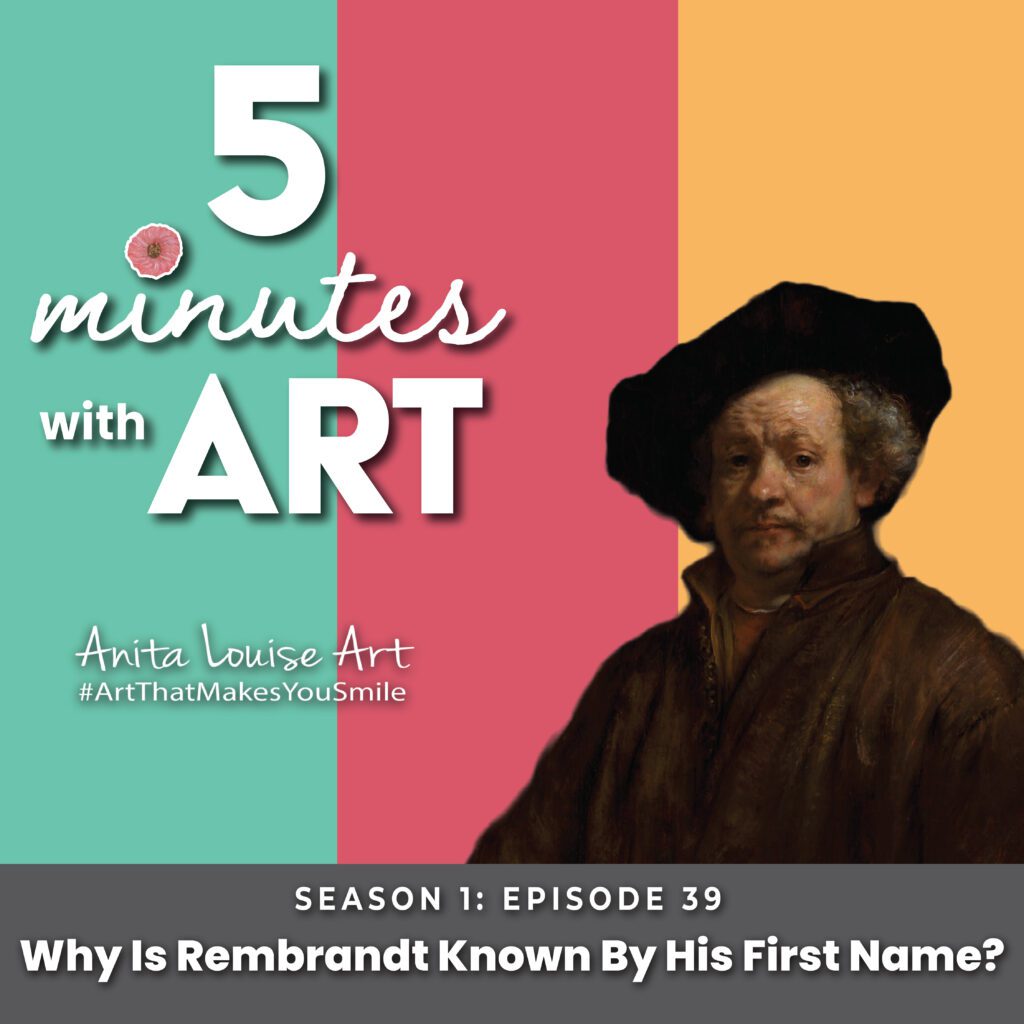
Listen To Our Podcast About Why Is Rembrandt Known By His First Name? by clicking here.
Ways Rembrandt Signed His Name
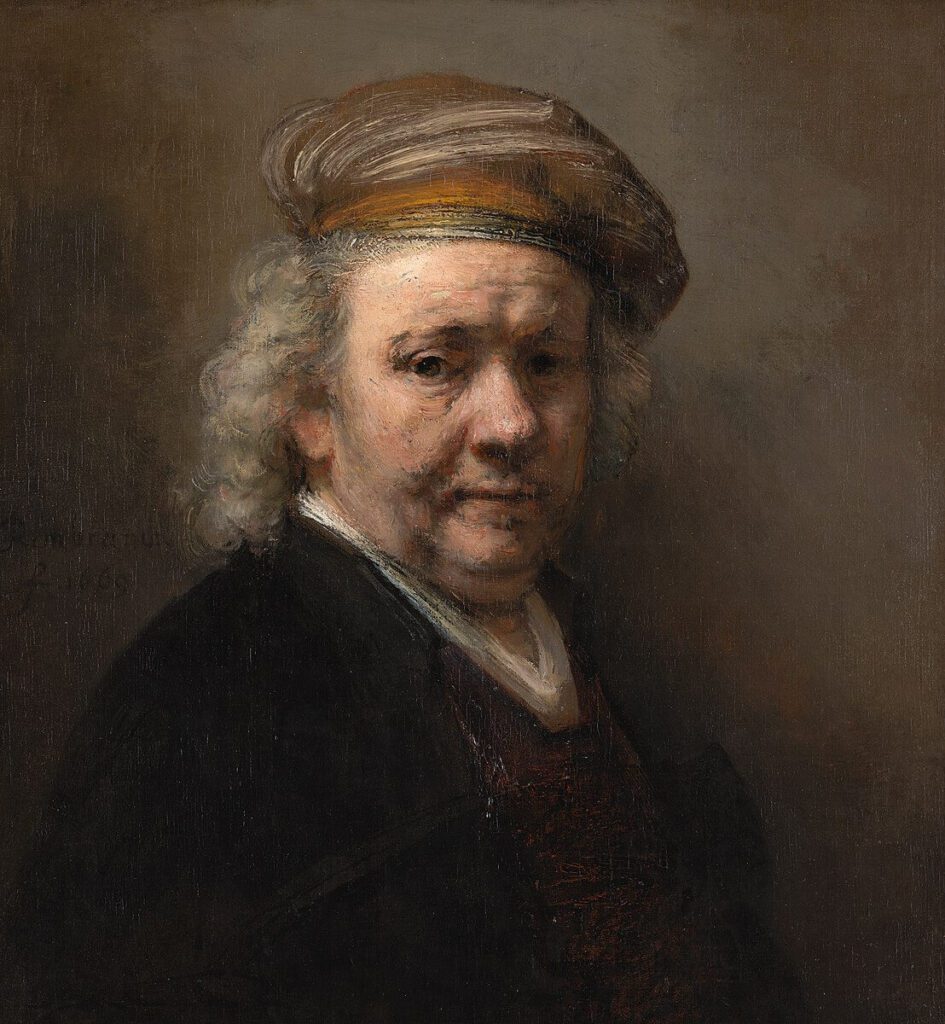
Rembrandt signed his paintings in many different ways until he finally settled on using Rembrandt as his signature. Here are the significant ways and dates that Rembrandt signed his art:
- 1625 – R or RH – His earliest signature consisted of just a simple” R” or “RH,” which stands for Rembrandt Harmenszoon
- 1629 – RHL – In 1629, we see the signature as RHL, which stands for Rembrandt Harmenszoon of Leiden; we assume the L stands for Leidenis or Leiden, which was the town where he was born.
- 1632 – RHL van Rijin – In later 1632, he used the signature RHL van Rijin and added his last name, van Rijin to the signature.
- Later 1632 – He started to sign his artwork with the name Rembrant.
- 1633 – Rembrandt – In 1633, he added the silent “d” to his name. He used this signature until he died in 1669.
The change of Rembrandt’s name from Rembrant to Rembrandt was purely a visual change and a change of spelling. It did not change the way his name was pronounced.
What is also interesting is that Rembrandt seems to have been more of an artistic name; in all the legal documents that mentioned him during his lifetime, the spelling of his first name was always Rembrant and not Rembrandt. So, adding the “d” to his name seems to have been more of a visual and artistic choice than a legal one.
We know that all these signatures must have had some significance because he used them at specific times of his life. In 1633, he changed his name to include the” d” as Rembrandt, which must have had a real significance to him as he used it until his death.
We do not know why Rembrandt was known by his first name or why he signed his paintings as Rembrandt but still used his legal name as Rembrant. However, we know that using only a first name was a common practice for many artists.
The Artistic Legacy of Rembrandt: 10 Reasons for His Enduring Importance
- Master of Chiaroscuro: Rembrandt’s use of light and shadow (chiaroscuro) was revolutionary, bringing dramatic intensity and emotional depth to his works.
- Psychological Depth in Portraiture: He is renowned for his ability to capture the psychological complexity and humanity of his subjects, making his portraits deeply personal and expressive.
- Innovative Techniques: Rembrandt constantly experimented with painting techniques, pushing the boundaries of texture, lighting, and composition.
- Influential Storyteller: His paintings often depicted biblical, historical, and mythological scenes, narrated with a unique blend of realism and drama.
- Impact on Etching and Printmaking: Rembrandt was also a master etcher. His innovations in this field expanded the possibilities of printmaking as an art form.
- Influence on Future Generations: His work has inspired countless artists, influencing various art movements and styles well beyond his lifetime.
- Realism and Attention to Detail: Rembrandt’s attention to detail and commitment to realism set new standards in art, especially in his portrayal of textures and materials.
- Exploration of the Human Condition: His artworks reflect a deep understanding and exploration of the human condition, resonating with viewers across centuries.
- Diversity of Work: His oeuvre includes paintings, etchings, and drawings, showcasing his versatility as an artist.
- Cultural and Historical Significance: Rembrandt’s works provide a rich insight into 17th-century Dutch society, culture, and history, making him an important figure in the study of European art history.
Rembrandt’s contributions to art have cemented his status as one of history’s most important and influential artists. His mastery of technique, depth of expression, and innovation have left an indelible mark on the world of art.
Frequently Asked Questions
Why is Rembrandt known by only his first name?
Rembrandt is commonly known by his first name because, from 1633 until his death in 1669, he consistently signed his artworks as “Rembrandt.” This unique practice has contributed to his recognition by just his first name.
Did Rembrandt always sign his artworks with just his first name?
No, Rembrandt did not always sign his artworks this way. Before 1633, he used various signatures. However, during the later years of his career, he adopted the practice of signing with just his first name.
Why did Rembrandt change the way he signed his art?
The reason behind Rembrandt’s decision to sign his art with only his first name remains unclear. It could be attributed to personal preference, artistic evolution, or a desire to establish a distinctive identity.
Was Rembrandt his original name?
No, Rembrandt was not his original name. The artist’s full name was Rembrandt Harmenszoon van Rijn. The use of “Rembrandt” as a single name is a simplification and convention that developed over time.
Is Rembrandt a common Dutch name?
No, Rembrandt is not a common Dutch name. In fact, it is believed that the artist’s family name was originally “van Rijn,” and the use of “Rembrandt” as a given name is somewhat unusual.
Did other famous artists adopt a similar naming convention?
Yes, other renowned artists like Michelangelo, Titian, and Raphael are also known primarily by their first names. This practice has become a convention for referring to these historical artists.
Were there any legal or societal reasons for artists using only their first names?
There is no evidence to suggest legal or societal reasons for artists using only their first names. It appears to be more of a personal and artistic choice rather than a requirement.
How has the tradition of referring to artists by their first names persisted over time?
The tradition of referring to artists by their first names has persisted through art history, likely due to the iconic status of these individuals. It has become a cultural norm and a way to distinguish them from others with similar surnames.
Did Rembrandt’s contemporaries also adopt the practice of using only their first names?
While some artists of Rembrandt’s time did use variations of their names in their signatures, the practice of using only the first name was not universal. Each artist had their own unique way of signing their works.
How has the single-name convention influenced Rembrandt’s legacy?
The use of only Rembrandt’s first name has contributed to the artist’s distinct identity and recognition. It has become an integral part of his legacy, making him instantly recognizable in the art world and beyond.
Anita Louise Art is dedicated to art education, great artists, and inspiring others to find and create their art. We love art that uplifts and inspires. #ArtToMakeYouSmile! #ArtToMakeYouHappy!
If you are interested to see any of my art, you can find out more by clicking here. If you are interested in what inspires me and my paintings, you can discover more by clicking here.
We have a free newsletter and would love you to be part of our community; you can subscribe to the newsletter by clicking here. If you have any questions, I would be happy to talk to you anytime. You can reach me, Anita, by clicking here.
Subscribe to our Anita Louise Art YouTube Channel filled with great videos and information by clicking here.
Frequently Asked Questions
Who was Rembrandt?
Rembrandt Harmenszoon van Rijn was a Dutch painter and etcher. He is generally considered one of the greatest visual artists in the history of art and the most important in Dutch art history.
What is Rembrandt known for?
Rembrandt is known for his innovative techniques in painting and etching, his contribution to the Dutch Golden Age of painting, and his remarkable ability to capture human emotion in his works.
What are some of Rembrandt’s most famous works?
Some of Rembrandt’s most famous works include “The Night Watch,” “Self-Portrait with Two Circles,” “The Anatomy Lesson of Dr. Nicolaes Tulp,” and “The Jewish Bride.”
When did Rembrandt live?
Rembrandt was born on July 15, 1606, and died on October 4, 1669.
What style is Rembrandt’s art categorized as?
Rembrandt’s art is categorized as part of the Dutch Golden Age and the Baroque period. His style is marked by innovative uses of light and shadow, intricate detail, and a profound sense of humanity.
How did Rembrandt influence art history?
Rembrandt’s innovative techniques, especially his handling of light and his complex painting techniques, have greatly influenced generations of painters. His self-portraits, in particular, have provided a unique insight into the artist’s life and his emotional state.
Where can I see Rembrandt’s works today?
Rembrandt’s works are held in numerous museums around the world, including the Rijksmuseum in Amsterdam, The Louvre in Paris, The Metropolitan Museum of Art in New York, and The National Gallery in London.
How many self-portraits did Rembrandt paint?
It’s estimated that Rembrandt painted between 80 and 90 self-portraits, including paintings, etchings, and drawings.
Related Questions
Is Art An Natural Gift, Or Can Anyone Be Good At Art If They Practice?
Most artists have some natural gift or desire to be an artist. But it is through their education, hard work, practice, and association with other artists that make all the difference. Having a natural gift is the start to becoming an artist, but just having a natural gift will not make you a good artist. Becoming a great artist requires practice, education, and a lot of hard work.
By clicking here, you can learn more by reading Is Art An Natural Gift, Or Can Anyone Be Good At Art If They Practice?.
Artemisia Gentileschi And Breaking Gender Barriers In Art
In the 17th Century in Italy, women had two career choices: joining a convent and becoming a nun or wife and mother. The laws also dictated that the man in the women’s lives, such as their fathers, husbands, and even sons, would make all the decisions for their lives. Women during this time had very few rights.
By clicking here, you can learn more by reading Artemisia Gentileschi And Breaking Gender Barriers In Art.
What Is The Difference Between Unity And Harmony in Arts?
Harmony is about art that creates cohesiveness; it stresses the similarities but related parts in the work of art. Unity is a much broader term; unity is all about the different parts of the work of art that are separate but all work together as one. In other words, unity is all the parts working well together in art.
By clicking here, you can learn more by reading What Is The Difference Between Unity And Harmony in Arts?.

